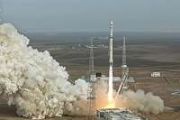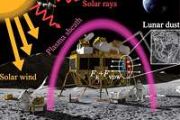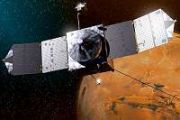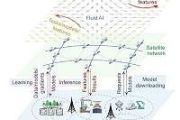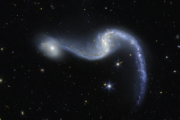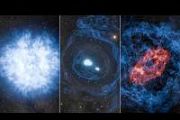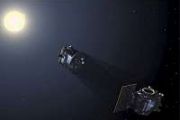
Copernical Team
SLI and AscendArc agree on 200 million GEO satellite leasing framework
 Aerospace asset finance firm SLI has signed heads of agreement to acquire two of AscendArc's next-generation Ka-band geostationary satellites, in a transaction valued at more than $200 million. The framework sits within a wider partnership that allows AscendArc to make its GEO spacecraft available on leasing terms instead of requiring customers to fund an outright purchase.
Through SLI's f
Aerospace asset finance firm SLI has signed heads of agreement to acquire two of AscendArc's next-generation Ka-band geostationary satellites, in a transaction valued at more than $200 million. The framework sits within a wider partnership that allows AscendArc to make its GEO spacecraft available on leasing terms instead of requiring customers to fund an outright purchase.
Through SLI's f MIT engineers design an aerial microrobot that can fly as fast as a bumblebee
 In the future, tiny flying robots could be deployed to aid in the search for survivors trapped beneath the rubble after a devastating earthquake. Like real insects, these robots could flit through tight spaces larger robots can't reach, while simultaneously dodging stationary obstacles and pieces of falling rubble.
So far, aerial microrobots have only been able to fly slowly along smooth t
In the future, tiny flying robots could be deployed to aid in the search for survivors trapped beneath the rubble after a devastating earthquake. Like real insects, these robots could flit through tight spaces larger robots can't reach, while simultaneously dodging stationary obstacles and pieces of falling rubble.
So far, aerial microrobots have only been able to fly slowly along smooth t MDA Space plans C250 million senior unsecured note issue maturing 2030
 MDA Space Ltd. has arranged a private placement of C$250 million in 7.00 percent senior unsecured notes due 2030 under an underwriting agreement. The company expects the offering to close around December 23, 2025, subject to customary closing conditions. The notes will be issued at C$1,000 for each C$1,000 in principal.
The notes will rank equally in right of payment with all existing and
MDA Space Ltd. has arranged a private placement of C$250 million in 7.00 percent senior unsecured notes due 2030 under an underwriting agreement. The company expects the offering to close around December 23, 2025, subject to customary closing conditions. The notes will be issued at C$1,000 for each C$1,000 in principal.
The notes will rank equally in right of payment with all existing and LEO internet satellites bolster navigation where GPS is weak
 As intentional and unintentional interference with GPS grows worldwide, researchers have shown that radio signals from commercial low Earth orbit (LEO) internet constellations such as Starlink and OneWeb can provide an alternative source of navigation and positioning, especially in regions where GNSS performance is degraded. The new work indicates that passively received LEO signals can be turne
As intentional and unintentional interference with GPS grows worldwide, researchers have shown that radio signals from commercial low Earth orbit (LEO) internet constellations such as Starlink and OneWeb can provide an alternative source of navigation and positioning, especially in regions where GNSS performance is degraded. The new work indicates that passively received LEO signals can be turne Canadian radar satellite contract positions MDA Space for RADARSAT replenishment role
 MDA Space has secured a $44.7 million contract from Public Services and Procurement Canada, acting for the Canadian Space Agency, to procure and deliver critical long lead parts in support of the RADARSAT Constellation Mission replenishment satellite development.
The Government of Canada has also signalled its intention to award MDA Space the full contract in 2026 to build, test, and launc
MDA Space has secured a $44.7 million contract from Public Services and Procurement Canada, acting for the Canadian Space Agency, to procure and deliver critical long lead parts in support of the RADARSAT Constellation Mission replenishment satellite development.
The Government of Canada has also signalled its intention to award MDA Space the full contract in 2026 to build, test, and launc Space shuttle design study maps path to breakthrough inventions
 Researchers examining NASA's space shuttle development argue that the agency's design approach offers a template for creating breakthrough products that combine many interdependent features, from launch systems to smartphones and pharmaceuticals. They focus on how NASA generated internal knowledge for the shuttle program between 1969 and 1971, when engineers had to balance performance, cost, and
Researchers examining NASA's space shuttle development argue that the agency's design approach offers a template for creating breakthrough products that combine many interdependent features, from launch systems to smartphones and pharmaceuticals. They focus on how NASA generated internal knowledge for the shuttle program between 1969 and 1971, when engineers had to balance performance, cost, and Lower-cost space missions like NASA's ESCAPADE are starting to deliver exciting science, but at a risk
Verifying that you are not a bot
How to watch one of the year's best meteor showers, the Geminids
Verifying that you are not a bot
New report outlines science priorities for human Mars exploration
Verifying that you are not a bot
Webb identifies earliest supernova to date
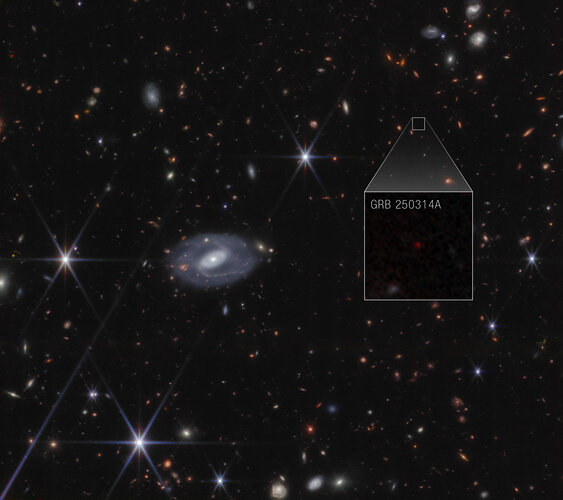
The NASA/ESA/CSA James Webb Space Telescope has confirmed the source of a super-bright flash of light known as a gamma-ray burst, generated by an exploding massive star when the Universe was only 730 million years old. For the first time for such a remote event, the telescope provided a detection of the supernova’s host galaxy. Webb’s quick-turnaround observations verified data taken by telescopes around the world that had been following the gamma-ray burst since it onset, which occurred in mid-March.


